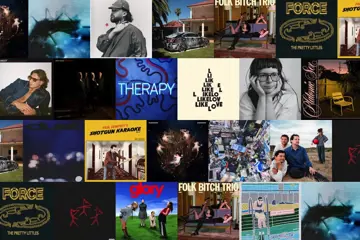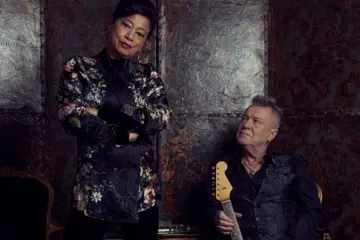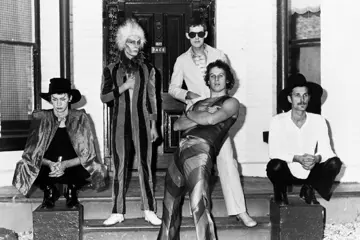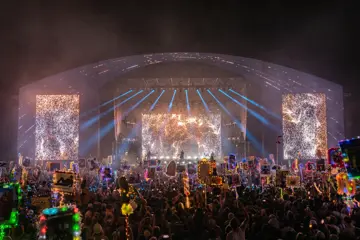For most people, the sorrowful story of Layla and Majnun won’t readily spring to mind. But this original pair of star-crossed lovers and their similarly ill-fated romance were already a prominent part of Persian folklore half-a-millennium before the Bard penned the most famous take on this tragic tale, Romeo And Juliet.
Shared by MIddle Eastern storytellers for centuries, passed orally from generation to generation, Layla And Majnun’s most definitive account was captured in Nazami Ganjawi's 12th-century epic poem. All the well-known beats of the story are present and accounted for: there’s a forbidden love affair defying the rivalry between two disapproving families; the young lovers, torn apart in life, are only reunited once more in death.
So far, so Shakespeare.
But there’s a remarkable alchemy that occurs in this dance-powered staging by the Mark Morris Dance Group and Silk Road Ensemble that takes the familiar and transmutes it into something rich and new. And it’s not just seeing this narrative through a different cultural lens that so reinvigorates it. Constantly shifting intersections of stylistic and historical influences, and the intermingling of the traditional and the contemporary, breathe fresh life into a story that might otherwise feel predictable or threadbare.
The American maestro of modern dance, Mark Morris, is undoubtedly the most high-profile creative on the bill. But despite this stature, his work is often underpinned by a quiet humility. Throughout his canon, music has been his most powerful muse, guiding the rhythm and flow of his dance as if the bodies at his command were melody made flesh. The same musical reverence is on full display in Layla And Majnun, as Morris takes his lead from Uzeyir Hajibeyli’s 1908 vocal setting of the text – a work with the notable distinction of being the first Middle Eastern opera. With the two principal singers, Alim Qasimov and Fargana Qasimova (Azerbaijan’s foremost exponents of a particular type of traditional singing known as 'Mungham') sat centre stage, flanked by the 16-musician strong Silk Road Ensemble, the score's role as the soul and anchor of the work is immediately asserted. Its infusion into the movement is equally evident, with the supple lines of Morris’ aesthetic peppered with exotic shimmies, whirling dervishes and sensuous undulations. There’s almost a distant hint – no doubt unconsciously – of the ritual otherness found in Nijinsky's iconoclastic setting of the Rite; a work that boasted a similarly chimeric fusion of folk craft and a more formalised choreographic discipline.
The production’s design is both delicate in its simplicity and yet surprisingly responsive. A painterly backdrop and costumes, created by artist Howard Hodgkin, offer a vibrancy evocative of the source material’s Middle Eastern heritage without any clumsy or pantomimic anachronisms. But even with these sensitivities to musical and ethnic contexts, Morris still finds plenty of room for innovation. Far from merely presenting a story ballet, Layla and Majnun’s passions are passed through an ever-moving kaleidoscope, as different pairs of dancers from the 15-strong ensemble are passed the mantle of hero and heroine in each of the work's acts. Moments of explicit narrative are swept away by sequences of deeply expressive impressionism. In the final scene, a procession of Laylas and their Majnuns become totems of tragic love, unmoored from the story as if souls released from mortal bonds. Their explosive, almost desperate gestures yielding to moments of yearning stillness that are both wrought with emotion and yet somehow meditative.
It goes without saying that the level of finesse on show, both musically and physically, is nothing short of faultless. But virtuosity is no surprise when world-class artists of this calibre are involved. There is, however, a revelation nonetheless. It’s a credit to the transformative power of Morris’ dance that the inevitable conclusion of this story not only remains powerfully affecting, but in fact becomes a journey of discovery. For never was a story of more woe…
Melbourne International Arts Festival present Layla And Majnun until 13 Oct at Arts Centre Melbourne.















